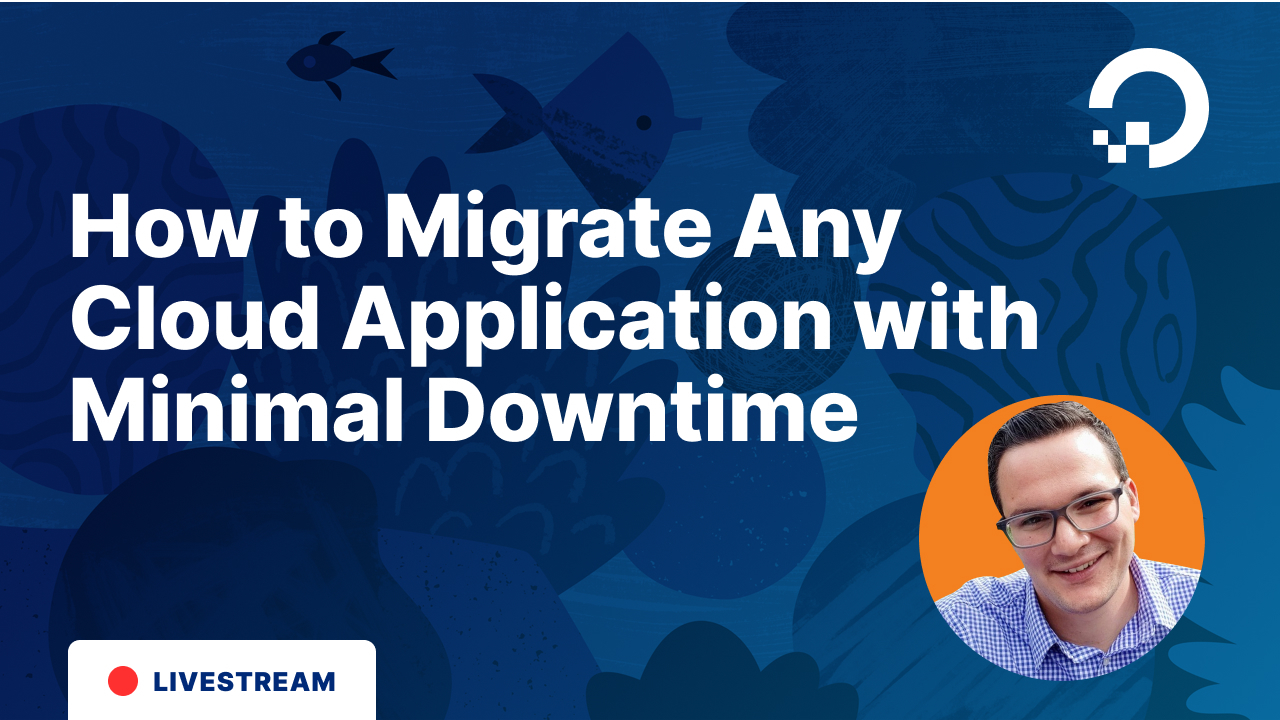- Log in to:
- Community
- DigitalOcean
- Sign up for:
- Community
- DigitalOcean

Want to get help with migration planning? Fill out this form and we’ll be in touch!
About the Talk
Don’t get stuck with a cloud provider just because you don’t know how to escape! Learn how to migrate with confidence and perform a low or zero-downtime cloud migration of all or part of any application.
What You’ll Learn
- How to audit your infrastructure in preparation for a cloud migration
- How to effectively plan and execute a migration
- How to build applications with possible future migration in mind
This Talk Is Designed For
Business leaders and entrepreneurs who want to avoid vendor lock-in by understanding how software applications move between cloud providers.
Prerequisites
Knowledge of web technologies and Infrastructure as a Service (IaaS) products.
Resources
Migration Checklist
- Verify lower TTLs have propagated
- Verify code (stateless services) has been deployed on new host
- Verify stateful services are ready to receive state on new host
- Change connection strings on all NEW services to point to new host
- Change connection strings in codebase to point to new host*
- Disable writes on all stateful services*
- Download current state from old host
- Upload current state to stateful services on new host
- Perform testing on new host for final verification
- Point public DNS to new host*
- Re-enable writes on new host*
*Indicates a step NOT taken during migration dry runs
Key Terms
Migration is moving code and state from one physical location to another.
Code is the stuff that doesn’t change unless you deploy something new.
State is the data your application creates as it runs. It’s customer accounts, uploaded photos, product descriptions, anything that your developers didn’t put in their version control system (probably Github).
Read-Only means a service can still respond to requests for data, but can’t make changes to its dataset.
Latency is the time it takes for packets to traverse the internet between physical machines.
Time to live (TTL) — All DNS records have this one value in common: TTL, which determines how long the record can remain cached before it expires.
Thanks for learning with the DigitalOcean Community. Check out our offerings for compute, storage, networking, and managed databases.
About the author
Platform Support Advocate with DigitalOcean since May of 2016
Still looking for an answer?
This textbox defaults to using Markdown to format your answer.
You can type !ref in this text area to quickly search our full set of tutorials, documentation & marketplace offerings and insert the link!
This comment has been deleted
39:35 for example not anticipated: deploying bitbucket infrastructure from terraform cloud. The terraform cloud workspace throws error because of a deprecated feature map() tomap() mid time migration… Roll back
one suggestion I have as a devops engineer is: If you estimate a simple migration of 1 hour starting at 8 am on a Monday then start at 6:00 am
- Table of contents
- Video
- About the Talk
- Resources
Deploy on DigitalOcean
Click below to sign up for DigitalOcean's virtual machines, Databases, and AIML products.
Become a contributor for community
Get paid to write technical tutorials and select a tech-focused charity to receive a matching donation.
DigitalOcean Documentation
Full documentation for every DigitalOcean product.
Resources for startups and SMBs
The Wave has everything you need to know about building a business, from raising funding to marketing your product.
Get our newsletter
Stay up to date by signing up for DigitalOcean’s Infrastructure as a Newsletter.
New accounts only. By submitting your email you agree to our Privacy Policy
The developer cloud
Scale up as you grow — whether you're running one virtual machine or ten thousand.
Get started for free
Sign up and get $200 in credit for your first 60 days with DigitalOcean.*
*This promotional offer applies to new accounts only.
